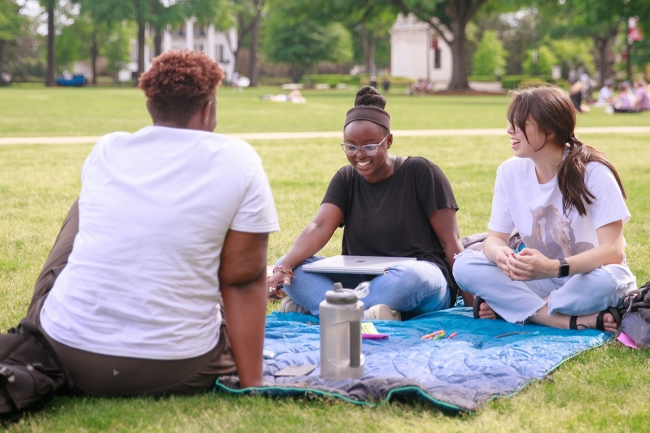You have /5 articles left.
Sign up for a free account or log in.

The University of Alabama re-launched Engagement Pods this spring to help students connect over shared interests in small groups.
University of Alabama
A fall 2023 Student Voice survey from Inside Higher Ed and College Pulse found the top reasons students participate in extracurriculars is to meet new people or make new friends (70 percent) or to establish a sense of belonging to campus life (28 percent).
Staff members at the University of Alabama partnered with student leaders to create interest groups to promote engagement and facilitate connections among peers in 2020 due to the COVID-19 pandemic. This spring, Engagement Pods are back on campus and involving even more students in various groups representing unique learner interests.
The background: University Programs (UP), part of the Student Life department, first established the idea of engagement pods in the 2020–21 academic year to help students bond during social distancing due to the COVID-19 pandemic. Pods met outside, taking walks, having coffee or finding other ways to connect in-person across campus.
Staff elected to bring back Engagement Pods this spring as they saw a need for students to find their niche and meet people in a large student population, says Paige Acker, director of University Programs.
Most of the work University Programs does throughout the year is large-scale programming to help students feel a sense of tradition and of belonging to the institution. Engagement pods and other small-scale programming, however, focus on connecting peers to one another.
How it works: There are 17 groups available for students to join this semester, with topics ranging from sharing coffee and coloring to goal planning and vision boards, Mario Kart and mindfulness. Each group meets at different times throughout the week at various locations on campus, as determined by the student leaders.
Before each group starts meeting, their leader completes a brief training that covers expectations, how to handle any issues that may come up and how the UP office will support them throughout the term.
Student employees for UP help manage engagement pod leaders, checking in throughout the term and helping coordinate any details, such as materials, supplies or space reservations. Each group receives a budget for the term provided by the university, whether it’s a coffee each week or a book for the term.
“If we’re saying we want to build community, we’re going to put our money where our mouth is and help you,” Acker says.
Student demographics vary by group, but the goal is to keep the pods small, around 15 people, to allow students to form meaningful relationships.
What’s different: Part of the appeal of engagement pods is the low barrier to entry. There are no fees or costs associated with participation and groups meet once a week for a few hours for six to eight weeks.
The groups are also entirely student designed. This term, staff did not reject any pod proposals, allowing students to be creative and share their own interests.
“We’re not dictating what they’re meeting about. What matters to us is that they’re building community,” Acker says.
There is some overlap between existing student organizations that serve hobbyists and the engagement pods, and UP staff help connect the two groups for students who may want to be even more involved.
Under evaluation: Throughout the semester, Acker and her team are receiving feedback from student leaders and plan to distribute an end-of-year assessment to gauge how the program went. Her hope is that participants will want to start their own groups in the future, creating a pipeline of student leaders.
We bet your colleague would like this article, too. Send them this link to subscribe to our weekday newsletter on Student Success.




